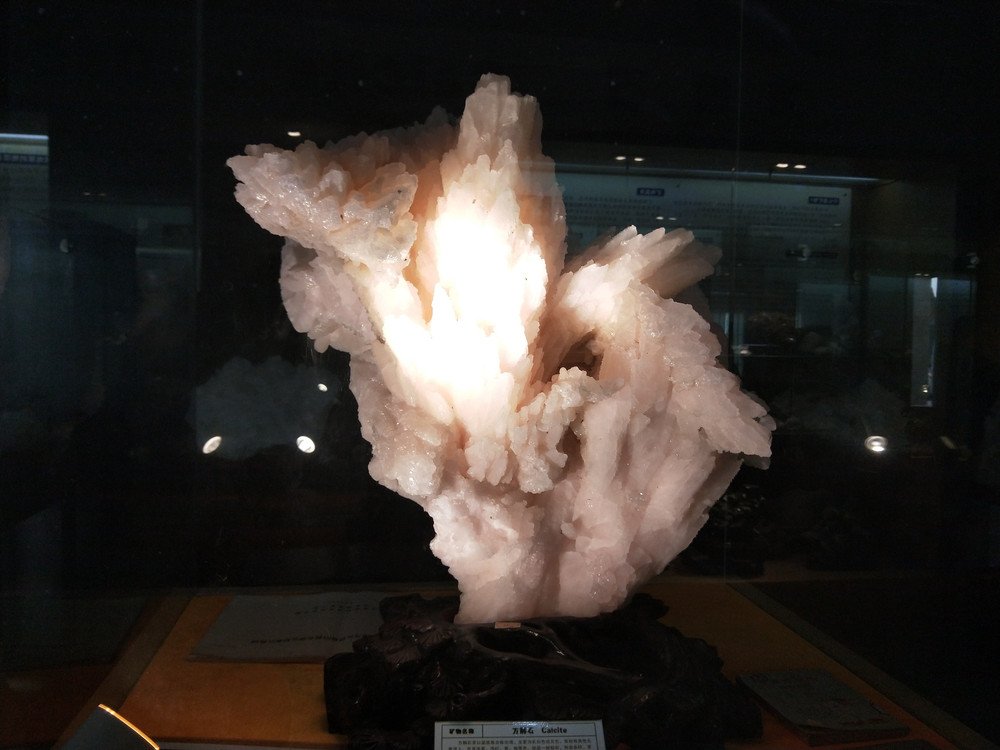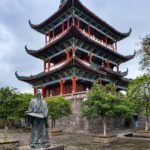Duration: 1 day Time: January Companion: Family Tour Style: Self-driving, Cultural, Free travel, Hiking, Budget travel, Weekend getaway Published on 2022-04-08 23:17 Travel Location: Shanghai Oriental Geology Science Museum Our planet Earth is already 4.6 billion years old, and throughout its long history, there have been as many as five hundred million species of life. However, due to significant changes in the geographical environment, there have been several major extinction events. Old species have become extinct, and new ones have emerged. After ancient life forms died, they were quickly buried underground. Typically, soft tissues decay and disappear, while hard parts undergo petrification to become hard body remains. At the same time, the original composition of these hard parts is replaced by subsequent minerals, forming fossils of ancient organisms. The Shanghai Oriental Geology Science Museum houses not only large and small stones but also a vast collection of biological fossils. Some are familiar to us, such as trilobites, ammonites, and crinoids. There are also many fossils left by organisms we have never heard of. The bone-lip fish lived in the Eocene epoch, approximately forty million years ago. It is a species of fish belonging to the bone-lip fish genus under the true bone fish suborder and is classified within the carp family. Its shape is spindle-like, indeed somewhat resembling today’s carps. The fossils are arranged in the display cabinet in five rows and five columns, with only one less in the last row, totaling twenty-nine bone-lip fish fossils. This made me think that this type of fish fossil is quite common, but in fact, it is also a relatively rare type of fossil, just that the resources of the Shanghai Oriental Geology Science Museum are quite abundant. The strange ring-legged shrimp is an invertebrate from the Late Jurassic to the Early Cretaceous period, with a large cephalothorax in a cylindrical shape, a well-developed rostrum, the first pair of legs in a crab claw shape, and the other two pairs of legs also have pincers, which are not much like today’s shrimp. The fourth and fifth pairs of legs are claw-shaped. The tail limbs are butterfly-winged, somewhat resembling the much-loved crayfish of today’s diners. The Chinese dragon bird fossil is a replica, as this type of fossil is extremely precious. Its name contains both the character for ‘dragon’ and ‘bird’, which is confusing whether it is a dinosaur or a bird. Such disputes caused a great deal of heated discussion when the fossil was first discovered, with each side arguing their own point of view. Later, through scientific methods, it was determined that the Chinese dragon bird is a small theropod dinosaur, a species of Compsognathus. According to the restoration drawing, they did not have the structure of wings. As for the feathers on their bodies, some believe it might just be a ‘decoration’ to indicate gender, while others believe it is an insulation device.
If the latter conclusion is established, it indicates that small dinosaurs like Sinosauropteryx are likely warm-blooded animals or even homeothermic animals. Qian Tuolong介虫 is a creature I have never heard of. According to the introduction, they lived from the Jurassic to the Paleocene and are from Indonesia. Judging from the appearance of the fossil, it is a relatively small insect or possibly a planktonic organism. The fossil of Hezheng Ovis is incomplete. The clearest part is its leg bone. This animal is a bovine species discovered in the Hezheng area of Gansu. In terms of individual size and posture, it is very close to today’s sheep. However, the structure of the skull, the shape of the horns, and the characteristics of the neck are closer to those of musk oxen. Musk oxen now only live in Alaska, North America. The discovery of Hezheng Ovis indicates that the origin of musk oxen should be in Asia and later migrated to North America through the Bering Land Bridge. Stegodon is an ancient animal that lived more than ten million years ago. Looking at its teeth, one can only sigh that it is indeed a famous large animal on land. Today’s African elephants and Asian elephants on land are descended from Stegodon. Due to climate change, grasslands replaced forests, so Stegodon became extinct. Its extinction is not as controversial as that of dinosaurs and still exists in speculation. Stegodon elephant lived in Asia and Africa from 12 million to 1 million years ago. Compared with today’s elephants, it has longer legs and much larger teeth. Their ivory is like two halberds. However, it is said that some stegodon elephants’ ivory will have a relatively large-angle bend at the top of the teeth, similar to that of mammoths. The fossil of Nanhsiungchelys is only the carapace. This turtle is huge. The biggest characteristic is that the bone plates have reticulated patterns. It lived in the Cretaceous period. Because it was unearthed in Nanhsiung, it is named ‘Nanhsiungchelys’ by the paleontological community. The Oil Malayan Crocodile lived in the late Eocene and is from the Youganwo Formation of the Maoming Series in Maoming, Guangdong. The patterns on its skin are also very similar to those of today’s crocodiles. The Shieldless Maoming Turtle was also discovered in the Maoming area. This turtle is relatively small in size and lived in the middle and late Eocene. The bulge in the middle of the carapace is relatively high. Keichousaurus was discovered in Guizhou. Its shape is quite similar to the ‘dragon’ in Chinese legends. It has a long and narrow body, four limbs and a tail. When it was discovered, it was called ‘four-legged snake’. This kind of dragon cannot fly and is a reptile. Paleotanais comes from Argentina and lived in the Miocene. Its carapace is nearly hexagonal. Its thick chelipeds are of different sizes. Its walking legs are very strong, but the fifth appendage is relatively thin and flat. It seems to be specially used for swimming. The science museum also has a large number of fish and plant fossils, but most of them are relatively common species. Crinoids are the most beautiful in shape and are also fossils exhibited in many museums.







